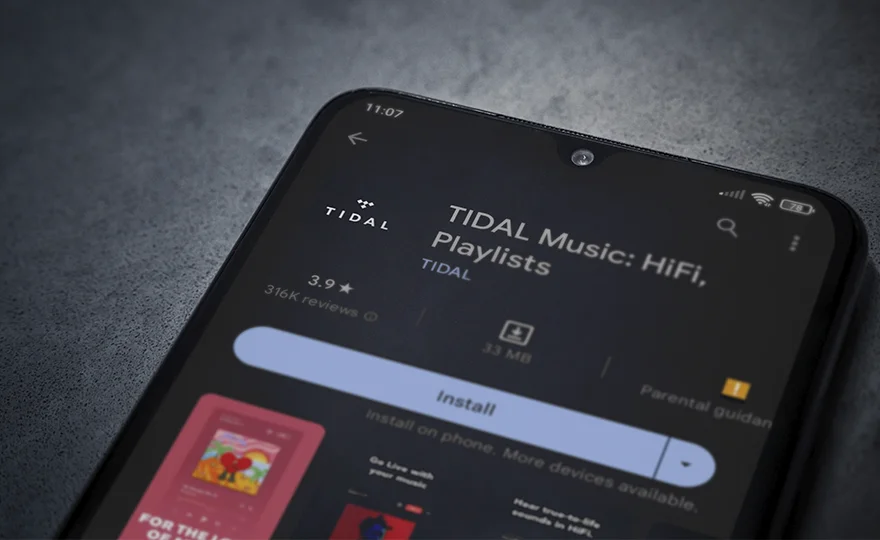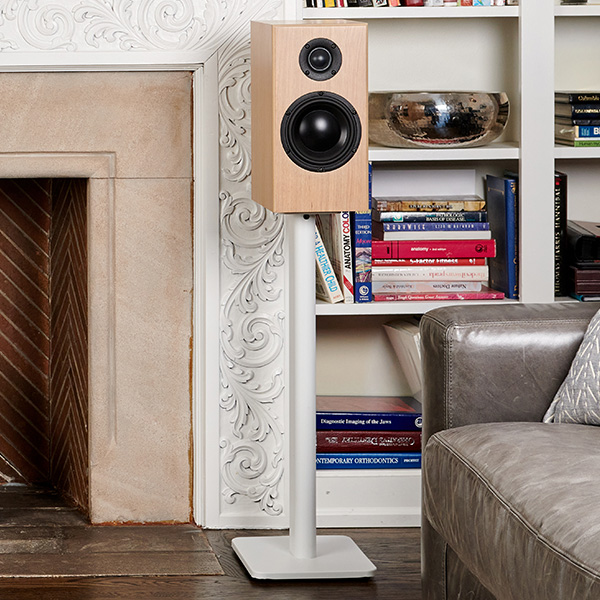
Ever crank up Pink Floyd’s Wish You Were Here or Radiohead’s Everything In Its Right Place on a great pair of speakers and feel like you’re right there in the studio with them? That goosebump-inducing moment has a lot to do with two behind-the-scenes digital audio terms: bit depth and sample rate.
Now, we know those sound like terms only an audio engineer would love, but hang tight—if you’re an audiophile or just a music lover who appreciates hearing every little detail in a track (looking at you, Kind of Blue fans), these are two things worth knowing about. Whether you’re streaming high-res files, collecting FLAC versions of Aja by Steely Dan, or building your dream setup with a killer set of Totem Acoustic speakers, understanding bit depth and sample rate will help you get the most out of your music.
Digital audio is basically a way of capturing real-life sound—the analog waveform—and converting it into 1s and 0s that can be stored, shared, and played back. This process is called analog-to-digital conversion (ADC), and it’s kind of like taking thousands of ultra-fast snapshots of a soundwave.
The quality of those snapshots is determined by two specs:
Both have a big impact on how music sounds when it comes pouring out of your speakers.
Sample rate, measured in kilohertz (kHz), is how often an audio signal is sampled per second. Typical sample rates include:
According to the Nyquist Theorem (yeah, we’re getting a bit nerdy here), to capture frequencies up to 20 kHz—the upper limit of human hearing—you need a sample rate of at least 40 kHz. That’s why CDs use 44.1 kHz. But go higher, and you start to capture more sonic nuance—those subtle transients in Hotel California or the shimmering cymbals in Take Five. Especially if you’re listening on accurate, revealing speakers, you might notice smoother, more lifelike playback.
Now, if sample rate is the number of snapshots per second, bit depth is how detailed each snapshot is. The more bits, the more precision.
Common bit depths include:
Bit depth affects dynamic range—how loud or soft a sound can be. Higher bit depth means you get to hear all those delicate details in Norah Jones’s vocals or the punch of a kick drum in Daft Punk’s Get Lucky, without any background hiss or loss of clarity.
Here’s what that looks like:
That’s a big deal if you’re listening on high-end speakers that can actually reproduce that full range.
If you’re the type to drop a needle on Kind of Blue or fire up OK Computer in a high-res format, this is where things get real.
Of course, there’s a limit. After 24-bit/96kHz, you may hit diminishing returns unless the rest of your gear is top-notch. Still, it’s all about synergy—and Totem speakers are built to reveal that extra magic.
Honestly? It depends.
There’s plenty of debate in the audiophile world. Some say you can’t hear the difference beyond CD quality. Others swear their 24/192 vinyl rips of Fleetwood Mac’s Rumours are on another level.
At the end of the day, the most important thing is the quality of the recording and mastering. A well-mixed 16-bit file will sound phenomenal on a good system. But if you’re using top-shelf gear, you’ll absolutely benefit from higher-resolution formats.
Bit depth and sample rate might sound like techy jargon, but they shape the music you love—from how much emotion you feel in a vocal to how lifelike a guitar solo sounds. Understanding these basics helps you get the best out of your digital music library, your gear, and your favorite songs.
At Totem Acoustic, we build speakers that honour every nuance, from the subtlest whisper to the boldest crescendo. Whether you’re discovering new details in The Wall or revisiting the warmth of Blue Train, our speakers are designed to take you there.If you enjoyed this article, head over to our News + Reviews section for more audiophile insights, gear tips, and listening inspiration. Because when it comes to great sound, there’s always more to discover.
Share this article with your friends!
